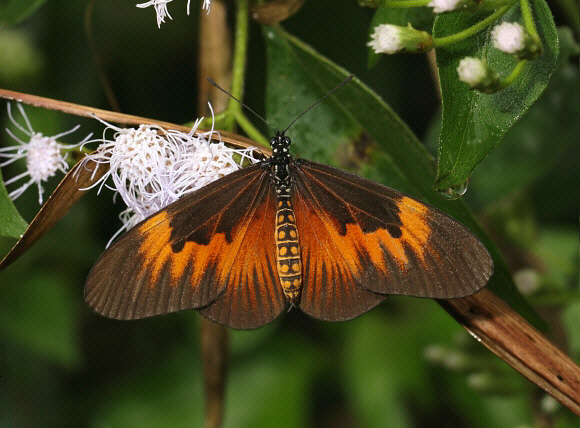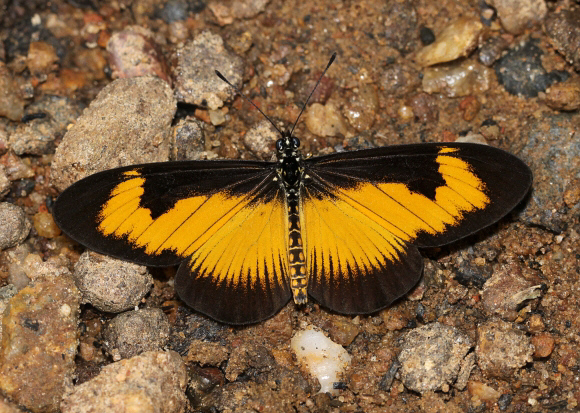
Introduction
There are 228 Acraea species, of which 223 are Afrotropical in distribution. The majority are found in the forests and savannahs of East Africa, while about 60 are found in West Africa. Beyond Africa a further 5 species occur in the Oriental region, and another is found in Australia / New Guinea. In the neotropical region there are 50 additional species, but these are normally placed in the genera Actinote, Altinote and Abananote due to differences in venation and genitalia.
All Acraea species have elongate forewings and rounded hindwings. The wings are thinly scaled and in many species are semi-transparent. The scales wear off very easily so that insects more than 4 or 5 days old have a glassy or greasy appearance. The majority of species have a predominantly brownish or greyish ground colour, marked with bands or patches of red or orange. The basal area of the underside hindwings of most species is marked with a pattern of small black spots.
Acraea alciope is a common and widespread species found across the forested belt from Sierra Leone to western Uganda.
Habitats
This species is found in primary and degraded forest, typically being found in forest edge habitats, e.g. in glades or along logging roads, and can also be found in cocoa plantations.
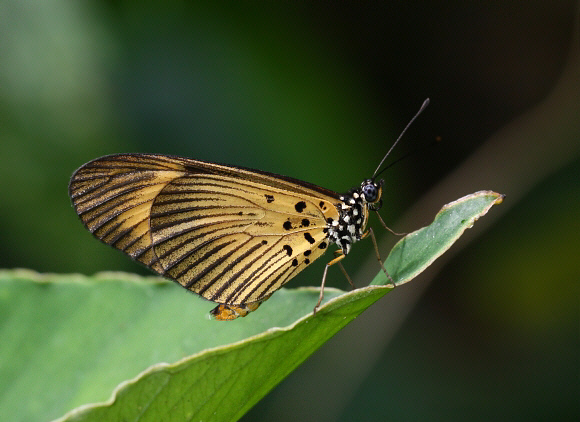
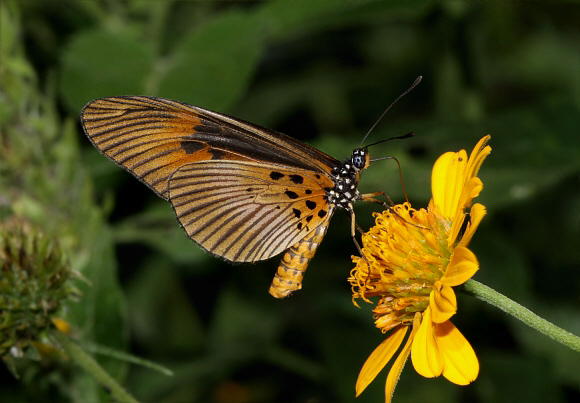
Lifecycle
The larval foodplant is Musanga ( Urticaceae ).
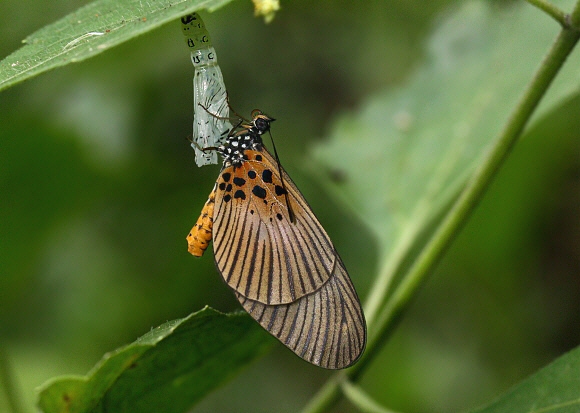
Adult behaviour
The distinctive yellow-banded males establish territories at track intersections where they await passing females, which they intercept in flight and force to the ground. Once copulated the pair take flight, with the male dangling from the abdomen of the larger more powerful female. They quickly settle on the foliage of a nearby tree or bush, where they remain copulated for 2 or 3 hours.
Both sexes commonly nectar at wild flowers, strongly favouring Eupatorium odorata.
